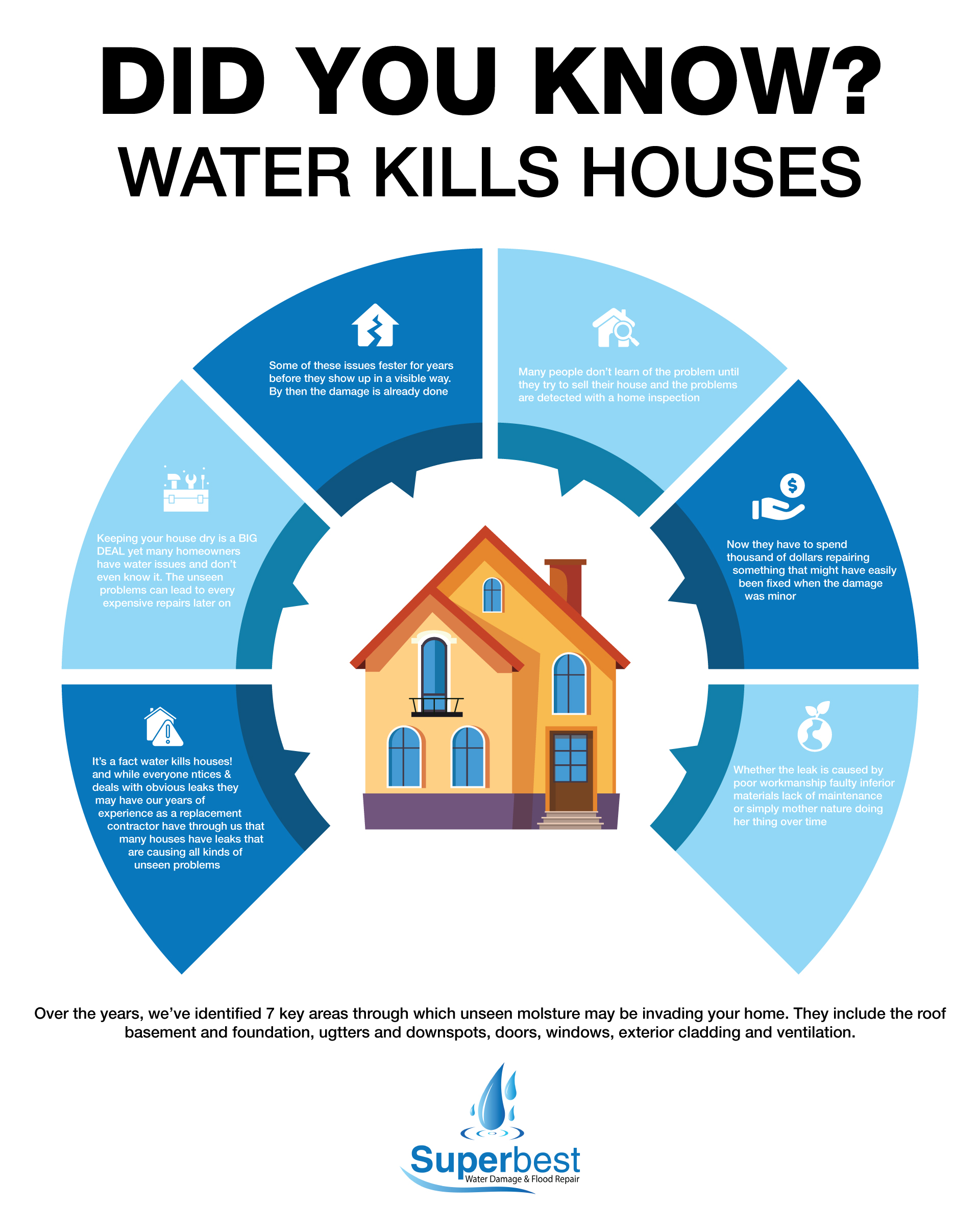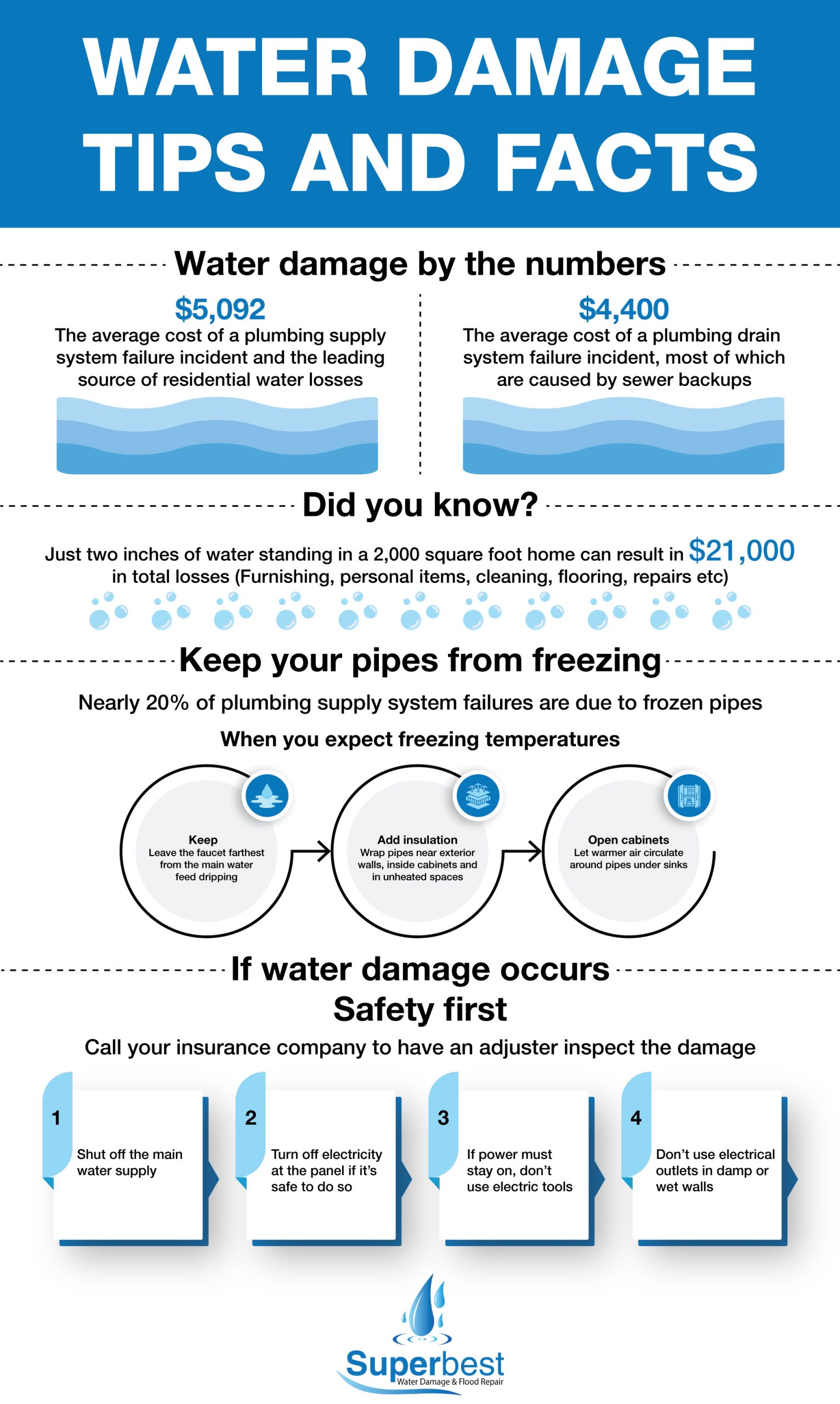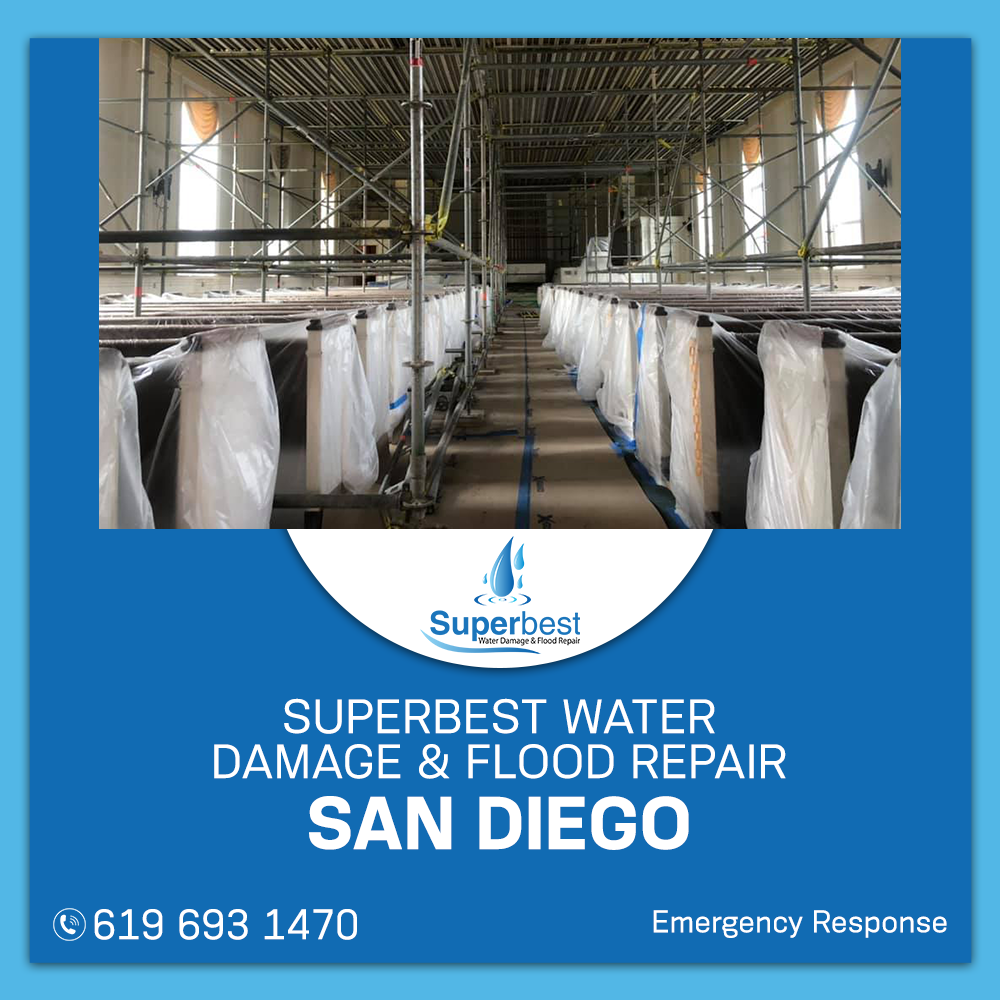SuperBest Water Damage San Diego: Your First Line of Defense Against the Drip, Drip, Drip of Disaster
 When disaster strikes in the form of a burst pipe, overflowing appliance, or unexpected storm, homeowners in Del Mar, La Jolla, and San Diego know one name for fast, reliable, and expert water damage cleanup: SuperBest.
When disaster strikes in the form of a burst pipe, overflowing appliance, or unexpected storm, homeowners in Del Mar, La Jolla, and San Diego know one name for fast, reliable, and expert water damage cleanup: SuperBest.
We’re not just the best in our name – we’re the best choice for you because:
- We’re fast: Our 24/7 emergency response means we’re there with lightning speed to minimize the damage and prevent mold growth. Every minute counts when it comes to water intrusion, and we won’t waste a precious second.
- We’re thorough: Our highly trained and certified technicians don’t just mop up the mess. We use state-of-the-art equipment and advanced techniques to extract all the water, dry every nook and cranny, and prevent future problems like mold and structural damage.
- We’re transparent: We keep you informed every step of the way with clear communication and detailed estimates so you know exactly what’s going on and what to expect. There are no hidden fees or surprises, just honest service.
- We’re compassionate: We understand the stress and anxiety that water damage can cause. Our friendly and experienced team is here to support you through the entire process, from calming your nerves to restoring your home to pristine conditions.
- We’re local: We’re your neighbors, and we care about our community. We’re deeply invested in San Diego and committed to helping our fellow residents bounce back from unexpected setbacks.
Don’t let water damage turn your dream home into a nightmare. Choose SuperBest Water Damage & Flood Repair San Diego and experience the peace of mind that comes from knowing your home is in the hands of the best.
Call us today for a free consultation, and let us show you why we’re the ultimate weapon against water woes.
Remember, SuperBest is just a phone call away from making your water damage worries a distant memory.
- Water Damage Restoration San Diego
- Flood Damage San Diego
- Emergency Water Removal San Diego
- Water Damage Repair San Diego
- 24 Hour Water Damage San Diego
- Water Damage Cleanup San Diego
- Burst Pipe San Diego
- Water Damage Insurance Claim
- Filing Water Damage Claim
- Insurance Coverage For Water Damage
- Does Homeowners Insurance Cover Water Damage?
- Water Damage Claim Process
- Water Damage Insurance Questions
- Insurance Adjuster Water Damage
- What Do I Say To My Insurance Company About Water Damage?
- How Do I Start A Water Damage Claim?
- Will My Insurance Rates Go Up After A Water Damage Claim?
- Should I Call My Insurance Company For A Small Water Leak?
- How Long Do I Have To File A Water Damage Claim?
- Does My Insurance Cover The Source Of The Water Damage? (E.g., burst pipe, roof leak)
We’re here to help 24/7 because that’s what Super neighbors do.
When Experience Meets Expertise, Water Doesn’t Stand a Chance
When a pipe bursts, a washing machine overflows, or the California rain decides to test your roof, don’t trust your precious San Diego home to just anyone. Choose SuperBest Water Damage & Flood Repair San Diego – the local heroes with the experience and expertise to conquer any water crisis.
Seasoned veterans, not rookies: We’ve been battling water woes in Del Mar, La Jolla, and the greater San Diego area for over 10 years. That’s hundreds of floods, leaks, and spills handled; each one tackled with the knowledge and skill honed from countless successful recoveries. We’ve seen it all, and there’s no watery situation we can’t handle.
Knowledge is power, and experience is the ultimate weapon.
Our technicians are not just certified and trained; they’re water-damage ninjas. They possess a comprehensive knowledge of drying techniques, mold prevention strategies, and structural restoration solutions. No matter the source or severity of the damage, we have the plan, the tools, and the know-how to get your home back to dry, safe, and beautiful.
- Our credentials speak volumes. SuperBest isn’t just a name; it’s a badge of expertise. Certified technicians, years of experience, and proven results – your water woes meet their match with us.
- San Diego trusts us, one crisis at a time. Thousands of satisfied homeowners in Del Mar, La Jolla, and beyond can attest that SuperBest delivers when water strikes.
- No challenge is too big, no detail too small. From burst pipes to flood emergencies, we handle it all with meticulous care and the latest restoration techniques.
- Transparency and communication? It’s in our DNA. You’ll never be left in the dark. We keep you informed, involved, and empowered throughout the entire process.
- SuperBest isn’t just a service, it’s a promise. We promise peace of mind, a restored home, and a return to normalcy – faster than you might think.
Tested and proven, time and again
We don’t just talk the talk. We walk the walk. Our track record of satisfied customers speaks for itself. We’ve earned the trust of countless San Diego homeowners thanks to our unwavering commitment to quality, transparency, and customer care. Just check out our online reviews – they’re a testament to the SuperBest difference.
Experience the SuperBest advantage: When water strikes, don’t settle for anything less than the best. Choose SuperBest Water Damage San Diego and experience the peace of mind that comes from knowing your home is in the hands of seasoned professionals. We’ll handle the mess, the stress, and the endless to-do list so you can focus on what matters most – getting your life back to normal.
- Your home and your trust are in good hands with SuperBest. We treat your property like our own, prioritizing safety, security, and complete transparency.
- Honesty is our policy, from estimates to invoices—no hidden fees, no surprises, just upfront communication and ethical pricing.
- We’re your neighbors, not just service providers. Your well-being and satisfaction are our top priorities, and we stand by our work with a rock-solid guarantee.
- A reputation built on trust, brick by water-damaged brick. Years of satisfied customers and community involvement – our commitment to San Diego runs deep.
- Rest assured, SuperBest has your back 24/7. From the first phone call to the final inspection, we’re here to guide you through every step with compassion and care.
Call us today for a free consultation
and let our experience take the worry out of water damage. Remember, with SuperBest, you’re not just getting a company, you’re getting a trusted neighbor and a water-damage superhero rolled into one.
SuperBest offers 5-Star Water Damage, San Diego. Emergency Home Repair & Restoration Cleanup. Call for the Best Water Damage San Diego, CA.






